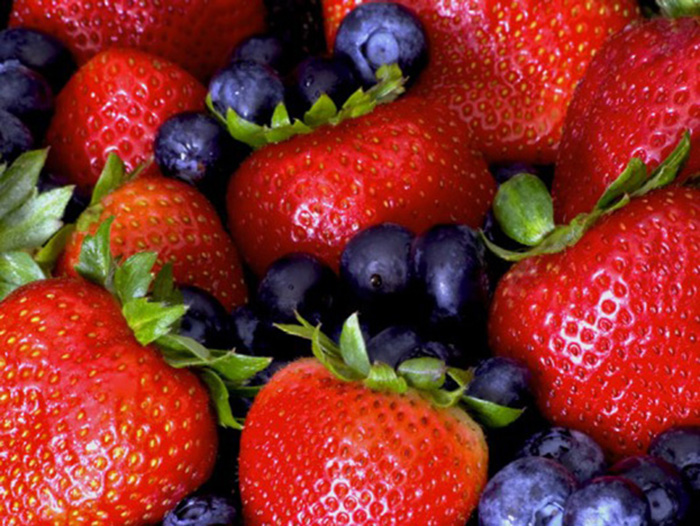Introduction
While fruits are rich in fiber, antioxidants, and phytochemicals that provide considerable beneficial health effects, they also contain natural sugars that have the potential to stress blood sugar control. As a result, many people with diabetes strictly avoid fruit even though eating the right types of fruit has actually been shown to help improve blood sugar control.
While there is no question that fruits can have a high glycemic index and/or glycemic load, new data is showing that fruit consumption can positively influence blood sugar control regardless of their glycemic index and glycemic load values.
Background Data:
Previous studies examining the association between total fruit consumption, as well as the consumption of individual fruits or fruit groups, and the risk of type 2 diabetes have produced mixed results. The best results have been seen in studies focusing on:
- Anthocyanin rich fruits (e.g., blueberries, dark grapes, strawberries, and apples)
- Chlorogenic acid containing fruit (prunes, peaches, plums, apricots, and apples)
- Grapefruit (due to its high content of the flavonoid naringin)
What these positive studies indicate is that specific fruit exert benefits in helping to improve blood sugar control due to the various phytochemicals they possess.
New Data:
Researchers from the Harvard School of Public Health examined dietary data from 66,105 women from the Nurses’ Health Study I; 85,104 women from the Nurses’ Health Study II; and 36,173 men from the Health Professionals Follow-up Study. These subjects were free of major chronic diseases at baseline in these studies. The main outcome measure was the development of type 2 diabetes.
Read More
When the researchers looked at the risk of developing diabetes and the consumption of three whole fruit servings per week of different fruit from pooled data from these very large studies they found the following risk levels:
26% reduced risk for blueberries
12% reduced risk for grapes and raisins
7% reduced risk for apples and pears
5% reduced risk for bananas
5% reduced risk for grapefruit
10% increased risk for cantaloupe
Diabetes risk was neutral for peaches, plums, apricots, prunes, oranges, and strawberries. These fruit neither increased or decreased the risk of type 2 diabetes. However, when the impact of eating three servings of these fruit was compared with the same amount of fruit juice per week, they were shown to be significantly protective. Simply switching out fruit juice for whole fruit significantly reduced the risk for diabetes (7% lower risk overall for any whole fruit and as much as 33% lower risk for blueberries).
The glycemic index/glycemic load values of fruits did not seem to be the factor that determined the fruit’s association with type 2 diabetes risk. However, the increased risk of type 2 diabetes seen with fruit juice consumption was definitely thought to be the result of the increased glycemic index/load of fruit juice. In other words, the consumption of fruit juice lead to more rapid and larger changes in serum levels of glucose and insulin compared to whole fruits and carries with it an increased risk for type 2 diabetes.
Commentary:
This study dispels a common misconception about fruit consumption. Yes, fruit contains natural sugars, but it also contains many compounds that promote health and reduce the risk of chronic diseases including type 2 diabetes. The key with fruit consumption is to focus on low glycemic choices like berries and to limit consumption to one serving for any three-hour period (to avoid stressing blood sugar control).
Another take away point from the above study is to avoid consumption of commercial fruit juices. Many of the beneficial compounds in fruit are destroyed during pasteurization. Fresh (preferably organic) fruit juices retain these beneficial compounds and provides considerable health benefits, but still need to be consumed in limited amounts to maintain proper blood sugar control (e.g., no more than 6-8 ounces per three-hour period and no more than two servings daily).
Reference:
Muraki I, Imamura F, Manson JE, et al. Fruit consumption and risk of type 2 diabetes: results from three prospective longitudinal cohort studies. BMJ. 2013 Aug 28;347:f5001. doi: 10.1136/bmj.f5001.



